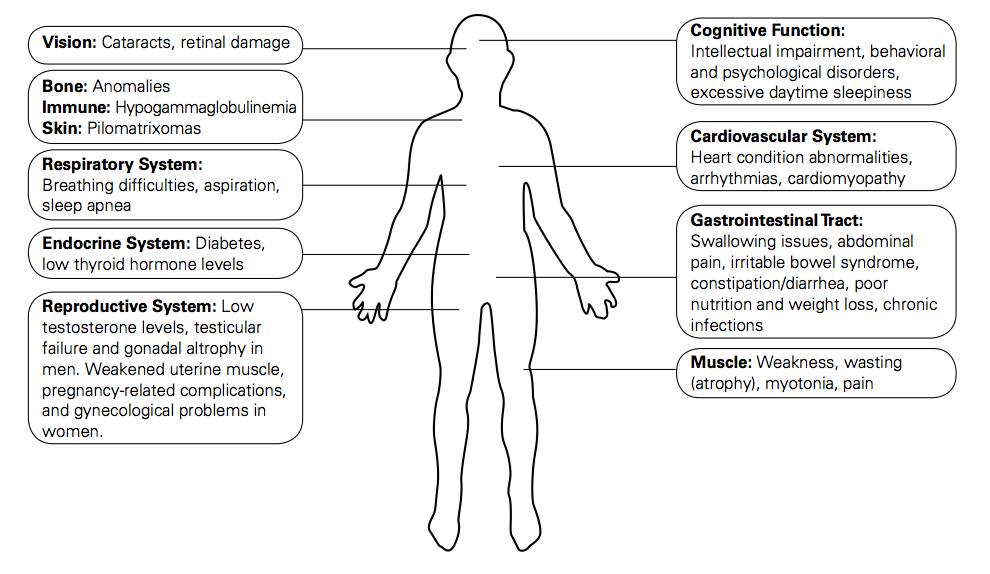Page Contents
WHAT IS IT?
Myotonic dystrophy is a multi system disease. It is primary characterized by weakness/stiffness in the distal muscles.

WHAT CAUSES IT?
This is an autosomal dominant genetic condition. It is caused a trinucleotide CTG expansion in the DMPK (dystrophia myotonica protein kinase) gene.
WHY IS IT A PROBLEM?
This mutated protein will result in a wide variety of different medical manifestations in patients (in addition to muscle stiffness/weakness):
- Cataracts
- Ptosis
- Arrhythmias
- Testicular atrophy
- Frontal balding
WHAT MAKES US SUSPECT IT?
Risk factors
Young adults
Initial Presentation
Common Chief Complaints:
- Muscle weakness
- Muscles stiffness
History Of Present Illness
Onset: Generally onset is in patients who present as young adults.
Muscles weakness initially begins as distal weakness, and becomes more proximal as the disease progresses.
Physical Exam Findings
HEENT exam:
Ptosis is commonly seen.- Frontal balding is a common finding in patients.

Motor exam: can demonstrate weakness in the distal muscles.
- Myotonia: muscles will also be stiff and slow to relax.
- Action myotonia
- Percussion myotonia
GU exam can reveal atrophied testicles.
CLINICAL WORKUP
Normal/slightly elevated creatine kinase values: in this condition CK values are usually normal or slightly elevated, and this can help rule out other conditions such as polymyositis.
EMG can show evidence of myotonia.
Genetic testing can show the CTG expansion in the DMPK gene (and ultimately will be diagnostic).
HOW DO WE TREAT IT?
Muscles weakness: there are no specific treatments for the muscle weakness experienced by patients.
Supportive management is used for this condition.
Myotonia
Anti-epileptics (Phenytoin, Carbamazepine) may reduce the myotonia.
WAS THERE A WAY TO PREVENT IT?
N/A
WHAT ELSE ARE WE WORRIED ABOUT?
Insulin resistance is common in patients who have myotonic dystrophy.
Cognitive dysfunction is common observed in patients with this condition.
OTHER HY FACTS?
Most common adult onset muscular dystrophy.
ARCHIVE OF STANDARDIZED EXAM QUESTIONS
This archive compiles standardized exam questions that relate to this topic.
FURTHER READING
Page Updated: 07.30.2016